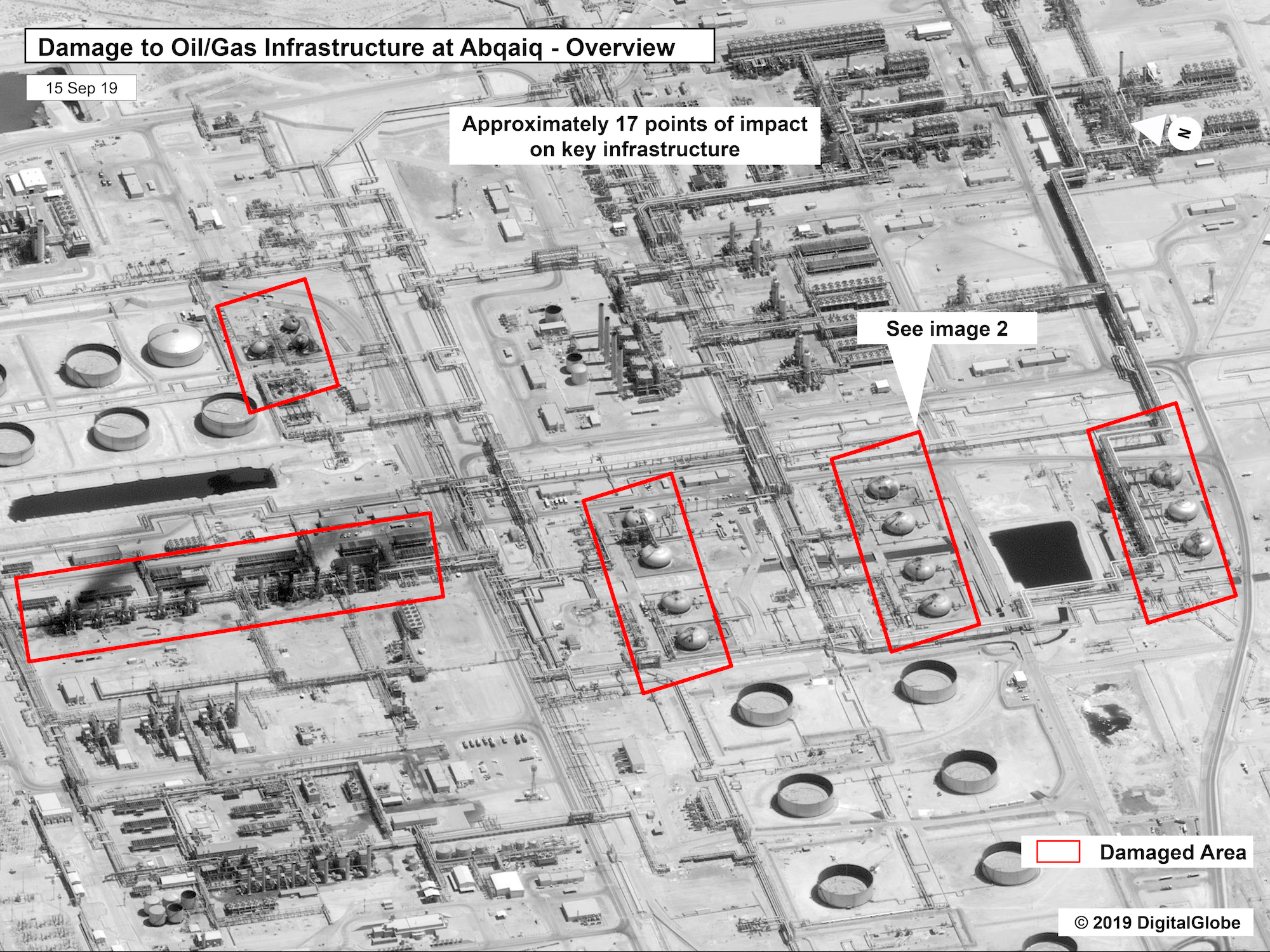- US officials have revealed evidence that they claim indicates likely Iranian responsibility for Saturday’s attack on two major oil fields in eastern Saudi Arabia.
- President Donald Trump on Sunday said that the US is “locked and loaded” in response to the attack, though he declined to name Iran as the culprit.
- US secretary of state Mike Pompeo blamed Iran for the attack on Saturday, despite Houthi rebels in Yemen claiming responsibility.
- Visit Business Insider’s homepage for more stories.
Trump administration officials have claimed that intelligence assessments indicate that Iran was likely responsible for Saturday’s attack on two major oil fields in Saudi Arabia that put global markets in chaos.
In briefings to news organisations on Sunday, officials provided evidence in a bid to substantiate Secretary of State Mike Pompeo’s accusation Saturday that the attack on Saudi Arabia’s Abqaiq and Khurais facilities was committed by Iran.
The Abqaiq facility is located in the Buqyaq region in the east of the country, about 60 km from the nearest town. It’s one of the most important oil facilities in Saudi Arabia, and the attack halved the kingdom’s oil output, causing a spike in prices.

This image, declassified by the US government Sunday, shows the oil facility in Abqaiq in January, before the attacks.
Officials say that the direction of the attacks, which can be seen in the image, substantiates their accusation against Iran.
The areas in white boxes are those which were hit in the attack.

This image shows the damage after Saturday's attack, where US officials say there were 17 points of impact on infrastructure at the facility.

These before-and-after images show damage to the oil facility in Khurais, about 200 km southwest of Abqaiq.


Houthi militias in Yemen have claimed responsibility for the attack, which they claim they launched using a fleet of drones.
However, US officials told the New York Times that the attacks likely came from the north or northwest, which they say the images support. This thesis suggests that the attacks were launched from Iran or Iraq, rather than Yemen, which is southwest of the facilities.
Iran has denied any responsibility for the attacks, but experts say that Iran frequently carries out attacks using proxies in order to maintain plausible deniability.
In a background briefing, US officials told the Times that that both drones and cruise missiles were used in the attack, with the scope, precision and sophistication of the attack likely beyond the capacity of Yemen's Houthi.
A senior administration official told ABC News that Iran launched 12 cruise missiles and 20 drones from its territory in the attack on the facilities.
Officials also said that some of the weapons used in the attack failed to reach their target, and that analysis of them would yield more clues about who was likely responsible.
In email to Business Insider, Sanam Vakil, a senior researcher at London's Chatham House think tank, said that Iran could be pursuing a number of strategic goals with the attack.
She wrote that Iran is seeking to prove the ineffectiveness of Trump's "maximum pressure" strategy against them, that has seen the president scrap the Iran nuclear deal and levy tough sanctions. Experts believe that with the moves Trump is attempting to pressurize Iran's leadership to strike a new deal with his administration.
Vakil said that Iran was seeking to "push the Trump administration to provide sanctions relief as part of any future negotiation." The president has reportedly mulled winding down the sanctions as part of a bid to bring Iran's leadership to the negotiating table.
She also wrote that Iran was seeking to create chaos and "exploit uncertainty by continuing to deny responsibility" for the attack, and the targetting of Saudi facilities could be intended to "force Saudi Arabia to reassess its anti-Iran position and make its own separate peace."
Experts are calling for the US government to release more images for independent experts to analyse and assess the accuracy of US claims.
The USG imagery partially released by @CNN today points to what appears to be the most critical parts of #Abqaiq's infrastructure. The Administration should release the before/after photos for outside experts to study if they want others to reach conclusions similar to theirs. pic.twitter.com/OMtkwSkPfc
— Tom Warrick (@TomWarrickAC) September 16, 2019
President Trump in a tweet Sunday said the US was "locked and loaded" in response to the attack, but declined to name Iran as the culprit.
Saudi Arabia oil supply was attacked. There is reason to believe that we know the culprit, are locked and loaded depending on verification, but are waiting to hear from the Kingdom as to who they believe was the cause of this attack, and under what terms we would proceed!
— Donald J. Trump (@realDonaldTrump) September 15, 2019

